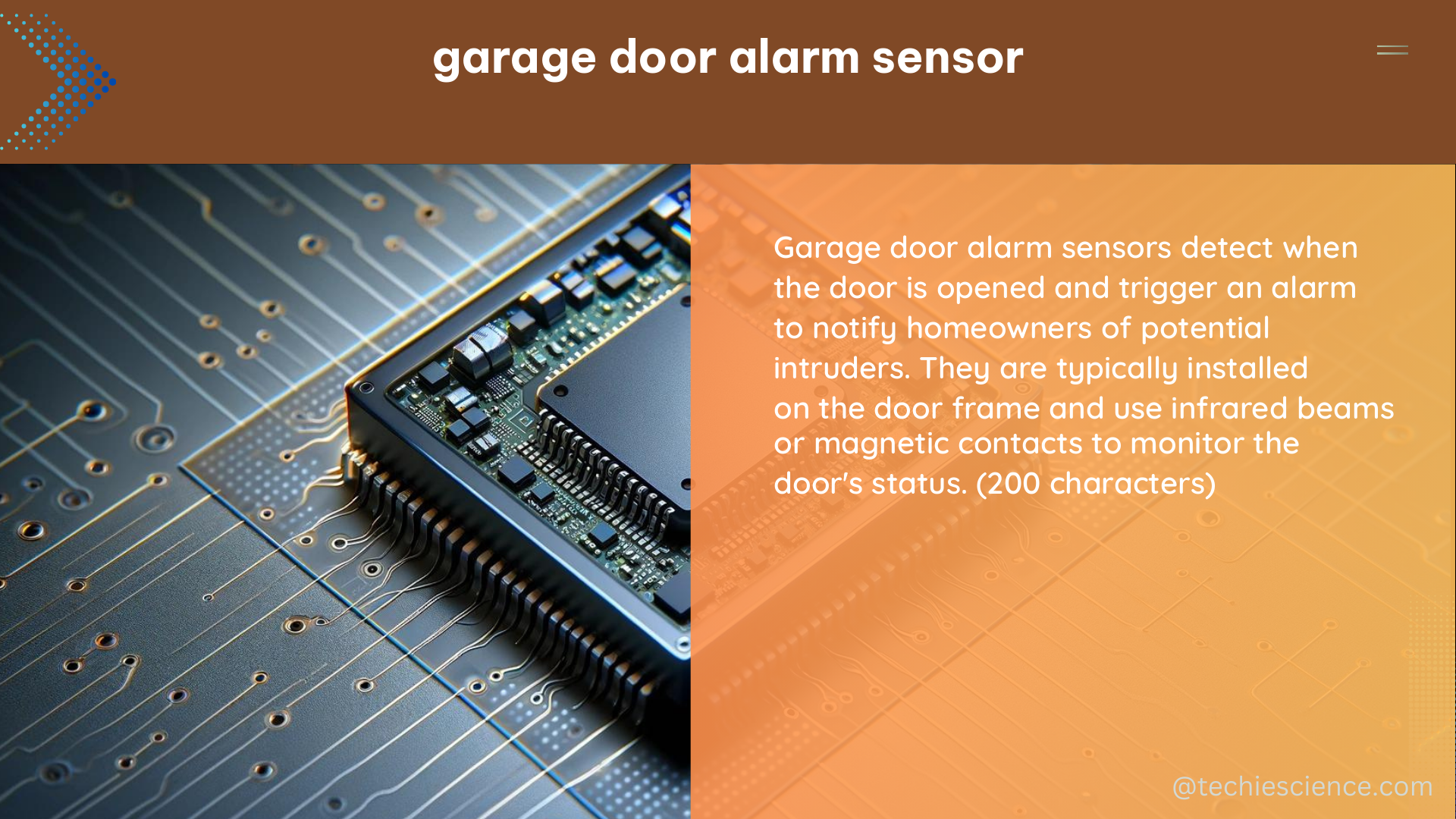Garage door alarm sensors are essential devices for home security, providing a reliable way to monitor the status of your garage door and alert you to any unauthorized access. These sensors are designed to detect the opening and closing of your garage door, triggering an alarm or notification when the door is left open or tampered with. In this comprehensive guide, we’ll dive deep into the technical specifications, DIY options, and effectiveness testing of garage door alarm sensors.
Frequency and Range
Garage door alarm sensors typically operate at a frequency of either 315 MHz or 390 MHz, which is the standard for most wireless garage door openers and home security systems. The range of these sensors can vary depending on the specific model and brand, but they generally have a range of around 50-100 feet. This range is sufficient to cover the majority of residential garages, ensuring that the sensor can reliably detect the door’s state from a safe distance.
Battery Life and Wireless Connectivity

One of the key features of garage door alarm sensors is their long battery life, which can often last up to 5 years on a single set of batteries. This extended battery life is achieved through the use of low-power wireless communication protocols, such as Z-Wave or Zigbee, which minimize the sensor’s power consumption.
The wireless connectivity of these sensors also allows for easy installation and integration with home security systems. By eliminating the need for wired connections, homeowners can quickly and conveniently set up the sensor without the hassle of running cables or drilling holes.
Alarm Volume and Sensitivity
The alarm volume of a garage door alarm sensor is typically in the range of 100-120 decibels (dB), which is loud enough to draw attention and deter potential intruders. The sensitivity of the sensor is also an important factor, as it determines the accuracy with which the sensor can detect the opening and closing of the garage door.
Most garage door alarm sensors use a combination of magnetic and motion-based detection to ensure reliable monitoring. The magnetic sensor detects the movement of the garage door, while the motion sensor can detect any unauthorized entry or activity within the garage. This dual-sensor approach helps to minimize false alarms and provide a more comprehensive security solution.
DIY Garage Door Alarm Sensor
For homeowners who are interested in a more customized and cost-effective solution, there are DIY options available for garage door alarm sensors. One such project is the “pico-w-garage-door-sensor” on GitHub, which uses a Raspberry Pi Pico W microcontroller and a magnetic sensor to detect the state of the garage door and send that information to a home automation system, such as Home Assistant.
This DIY project requires some electronics knowledge and programming experience, but it offers a highly customizable solution that can be tailored to the specific needs of the homeowner. The Raspberry Pi Pico W, with its low-power consumption and wireless connectivity, is an ideal platform for this type of project, allowing for a compact and energy-efficient sensor setup.
Effectiveness Testing
To measure the effectiveness of a garage door alarm sensor, you can perform a simple test by measuring the distance at which the sensor can still reliably detect the garage door’s state. This can be done by using a measuring tape to measure the distance between the sensor and the garage door while monitoring the sensor’s readings.
Additionally, you can measure the response time of the sensor by recording the time it takes for the sensor to detect a change in the garage door’s state and trigger an alarm or notification. This information can be useful in determining the overall reliability and performance of the sensor, ensuring that it meets your home security needs.
Conclusion
Garage door alarm sensors are essential components of a comprehensive home security system, providing reliable monitoring and alerting for one of the most vulnerable entry points in a home. By understanding the technical specifications, DIY options, and effectiveness testing of these sensors, homeowners can make informed decisions and choose the solution that best fits their security requirements.
Whether you opt for a commercially available sensor or a custom DIY project, the key is to ensure that your garage door is properly monitored and protected, giving you peace of mind and added security for your home.
References:
- geerlingguy/pico-w-garage-door-sensor – GitHub
- Can neighbor’s alarm system interfere with my garage door opener? – Reddit
- Setting Update for Garage Door Sensor – Ring Community
- Reverse engineering wired garage door signal (chamberlain liftmaster) – Home Assistant Community
- Garage Door Sensor | Frontpoint Security

The lambdageeks.com Core SME Team is a group of experienced subject matter experts from diverse scientific and technical fields including Physics, Chemistry, Technology,Electronics & Electrical Engineering, Automotive, Mechanical Engineering. Our team collaborates to create high-quality, well-researched articles on a wide range of science and technology topics for the lambdageeks.com website.
All Our Senior SME are having more than 7 Years of experience in the respective fields . They are either Working Industry Professionals or assocaited With different Universities. Refer Our Authors Page to get to know About our Core SMEs.